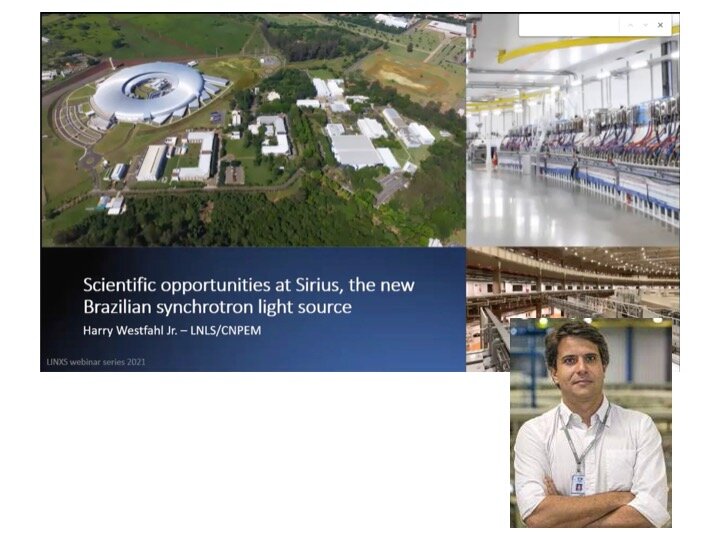VIDEO - Science at Large Scale Research Facilities - Scientific opportunities at Sirius, the new Brazilian synchrotron light source with Harry Westfahl


VIDEO - Science at Large Scale Research Facilities - Scientific opportunities at Sirius, the new Brazilian synchrotron light source with Harry Westfahl
Sirius, the new fourth-generation Brazilian synchrotron light source, is currently under commissioning by the Brazilian Synchrotron Light Laboratory (LNLS). Its 3-GeV storage ring, based on a Multi-Bend Achromat (MBA) magnet lattice, provides electron beams with size and divergence that match the phase space of the x-ray photons, approximating their so-called diffraction limit for tender x-rays. The dramatic increase in brightness and transversely coherent photon flux from such improvement, combined with advances in mechatronics, optics, detectors, and computing, open new avenues of research within spatiotemporal scales previously inaccessible.
Speaker: Harry Westfahl Jr, Brazilian Synchrotron Light Laboratory (LNLS).
This webinar is part of LINXS webinar series: Science at Large Scale Research Facilities, introducing the latest scientific breakthroughs and developments at large scale research facilities from all over the world.
Abstract
Sirius, the new fourth-generation Brazilian synchrotron light source, is currently under commissioning by the Brazilian Synchrotron Light Laboratory (LNLS). Its 3-GeV storage ring, based on a Multi-Bend Achromat (MBA) magnet lattice, provides electron beams with size and divergence that match the phase space of the x-ray photons, approximating their so-called diffraction limit for tender x-rays. The dramatic increase in brightness and transversely coherent photon flux from such improvement, combined with advances in mechatronics, optics, detectors, and computing, open new avenues of research within spatiotemporal scales previously inaccessible. The project initially foresees fourteen beamlines, six of which are in the final installation stages and initiating commissioning and will provide scattering, imaging, and spectroscopy capabilities spanning length scales from centimeters to angstroms. This presentation will highlight some complementary experimental capabilities and the scientific opportunities they will offer to explore the characteristics of biological, hierarchical, and condensed matter systems.
Biography
Harry Westfahl Jr. is the LNLS’ Director since 2020. He also served LNLS as Scientific Director from 2013 to 2019, as deputy scientific director from 2011 to 2012 and, as a researcher since 2001, when he joined the Laboratory after three years of postdoctoral research. Since 2013 he coordinates the project and construction of the beamlines for the new Brazilian synchrotron light source, Sirius. Its main research interests are in the physics of condensed matter systems, in the use of synchrotron radiation for the study of materials, mainly polymers and magnetic materials, and in the development of synchrotron radiation instrumentation.
